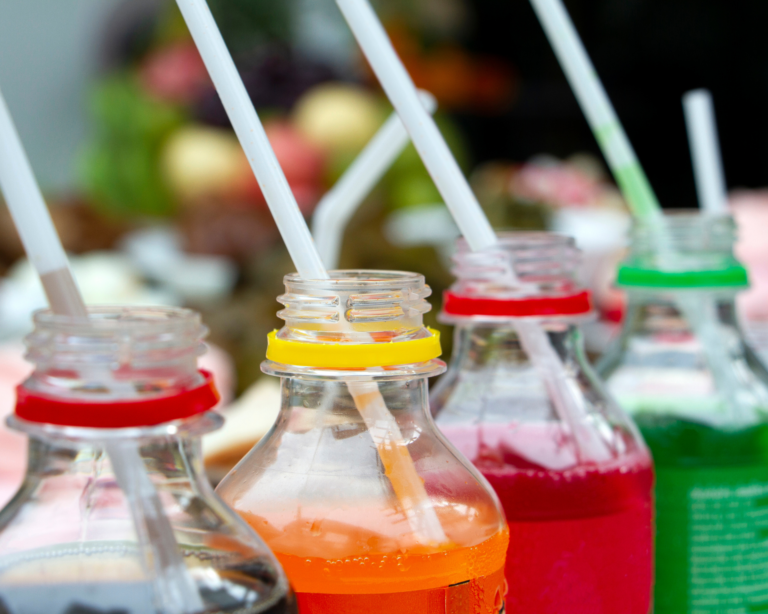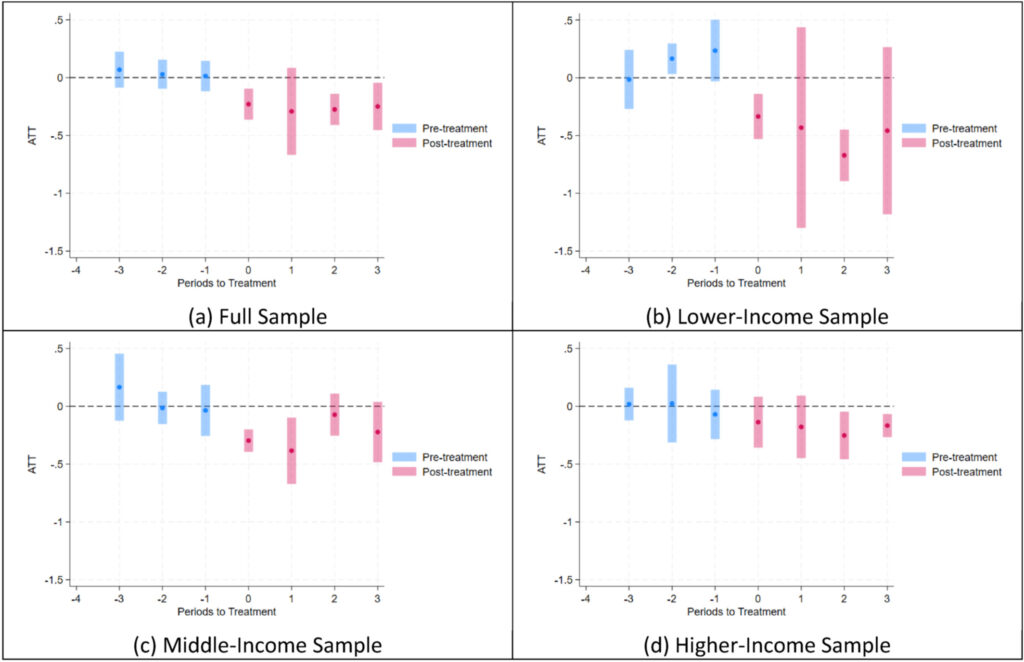Sweet Success
After a tax on sweetened beverages went into effect, families cut their sugary drink purchases by up to 50%.

Read Time: 2 minutes
Published:
Sugar-sweetened drinks are a major source of added sugar in American diets, contributing to rising rates of diabetes and obesity. Eight U.S. cities, including Seattle and Philadelphia, now tax these beverages to discourage consumption and fund public health programs.
Melissa Knox and colleagues studied how grocery shopping patterns changed after these taxes were implemented. Using data from store loyalty card scanners, they followed 400 households’ beverage purchases for a year before and after the tax began in four cities.
The study compared families earning less than $50,000 per year to those earning over $100,000. The researchers tracked beverage purchases over time, showing clear differences between income groups. In the graphs below, a vertical line marks when the tax began, with blue bars showing pre-tax purchases and pink bars showing post-tax purchases. Lower-income households showed a dramatic drop in purchases that persisted, while wealthy households made only minor changes to their buying habits.

Families with lower incomes cut their sugary drink purchases by half after the tax, while wealthier families reduced theirs by 18%. Though stores in lower-income neighborhoods charged higher prices after the tax (a 22% increase versus 11% in wealthy areas), families didn’t drive to untaxed areas to buy drinks. Instead, they switched to untaxed beverages at their usual stores.
While the tax led stores in lower-income areas to charge more for sugary drinks, it also prompted many families to choose different drinks altogether. These findings raise questions about whether pricing strategies are the best way to promote healthier choices across all communities.



